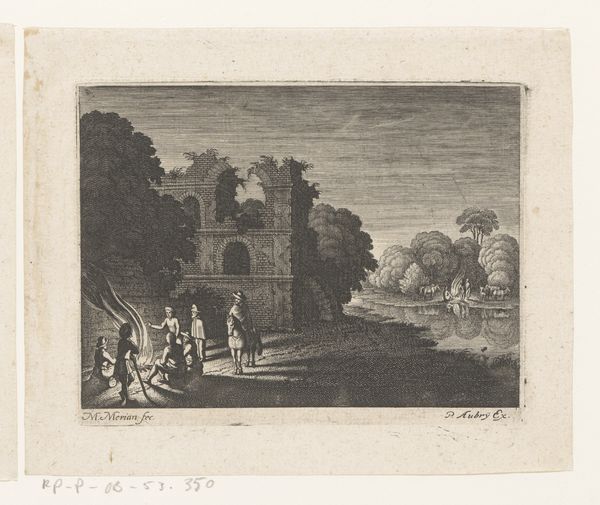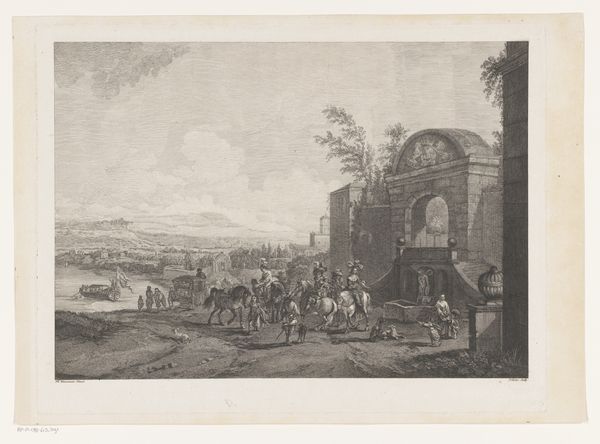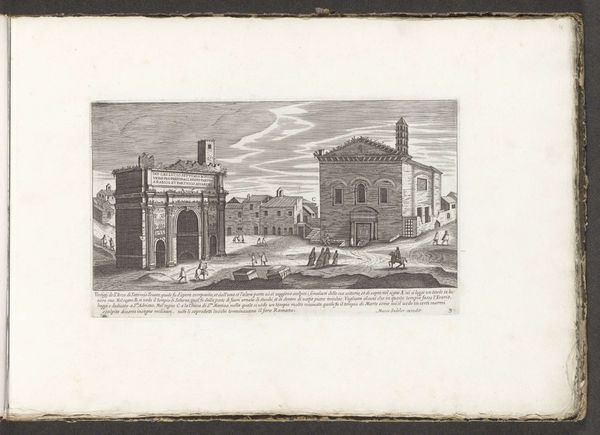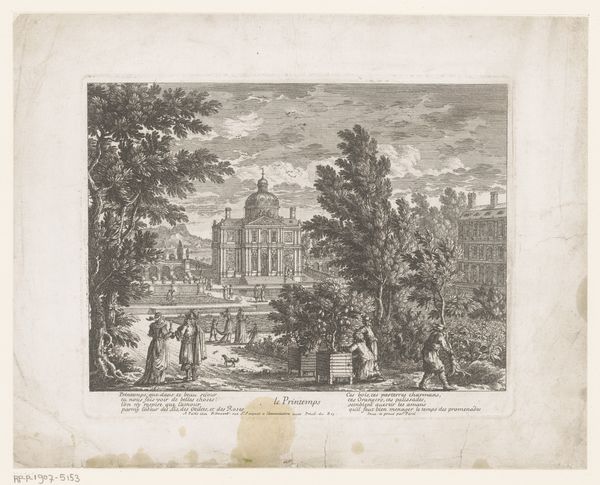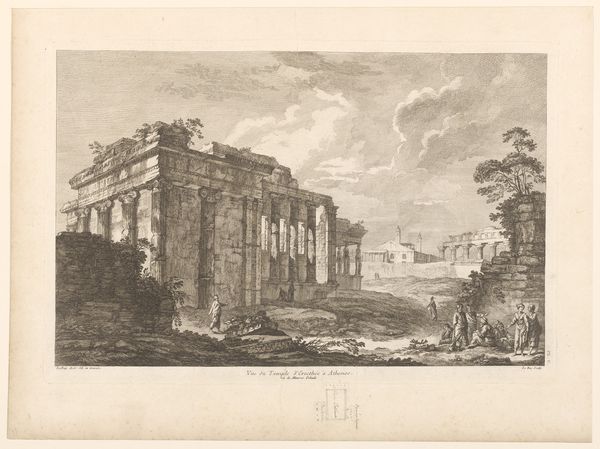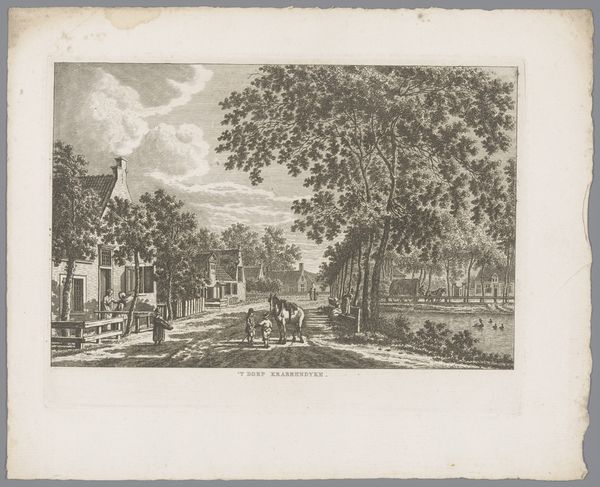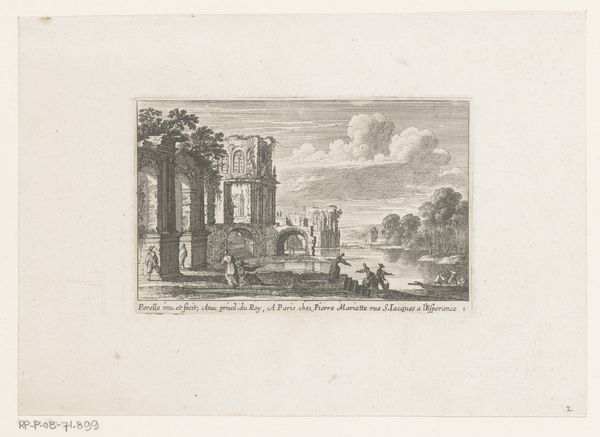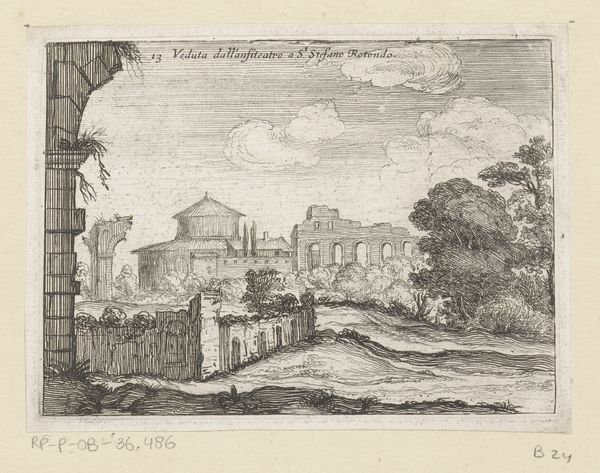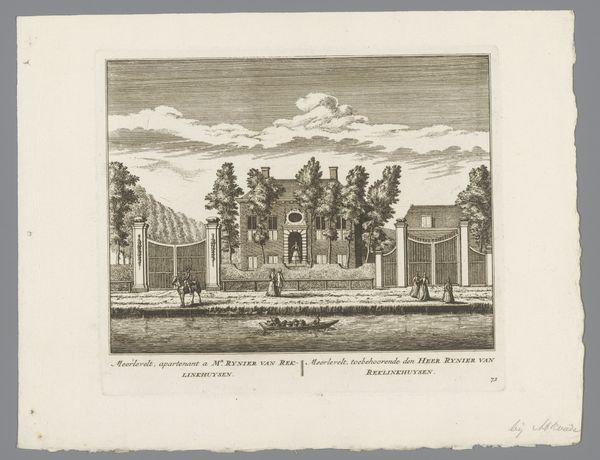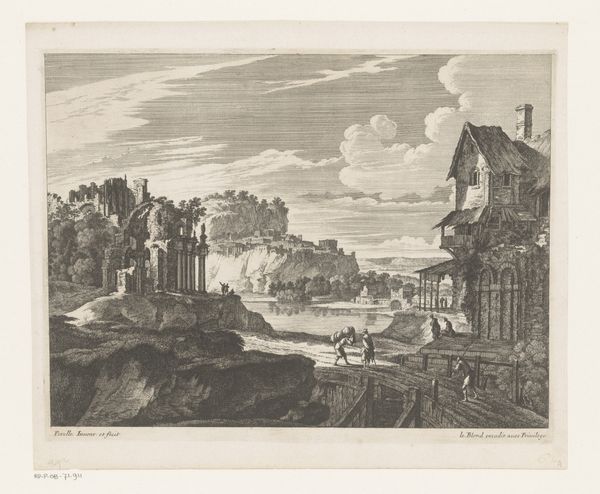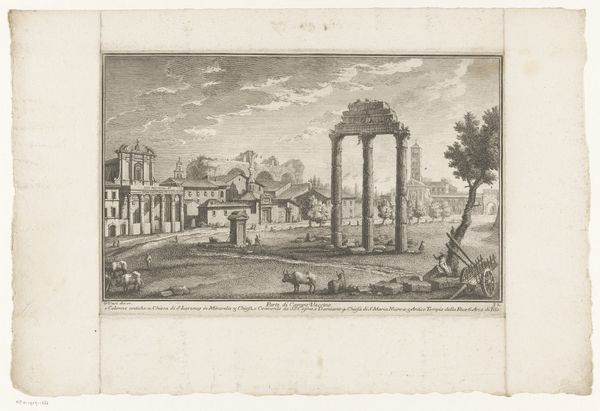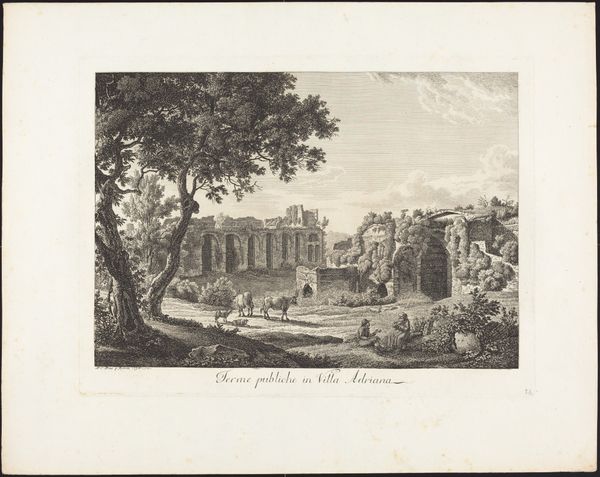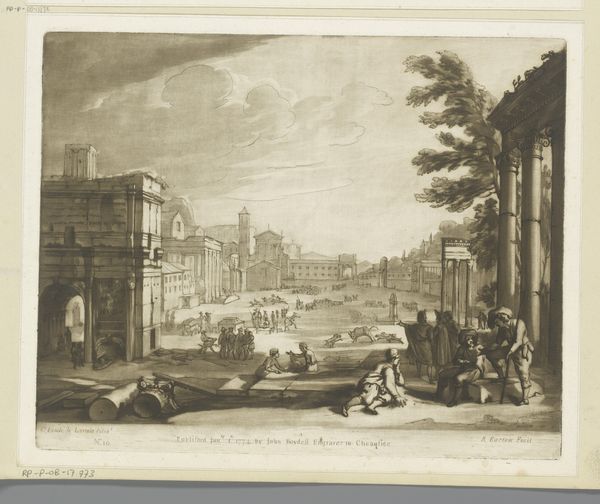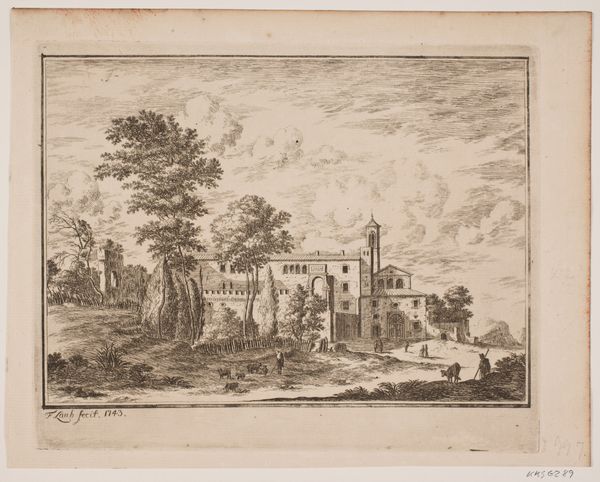
print, etching, engraving, architecture
#
baroque
# print
#
etching
#
landscape
#
cityscape
#
engraving
#
architecture
Dimensions: height 215 mm, width 303 mm
Copyright: Rijks Museum: Open Domain
Curator: Here, we’re looking at "Boog van Septimius Severus en Tempel van Saturnus," an etching and engraving made between 1747 and 1761 by Giuseppe Vasi. Editor: Immediately striking. It feels almost… industrial, or pre-industrial rather. All that stark, detailed stone next to these carts; you get a real sense of labor. Curator: Vasi's cityscapes often show Rome as a living city, where history isn't just monumental but integrated into daily life. Think about the baroque style influencing perspective and drama. Editor: Precisely. The method of production feels important. An etching allows for very fine detail—necessary to convey the worn texture of these classical sites. The medium amplifies the message. You feel the material’s age. Curator: I'm drawn to how this perspective can be interpreted. The foreground shows the carts and suggestion of current activity. In contrast, the backdrop displays fading imperial glory represented by these ancient ruins. This interplay brings forth questions regarding our relation to power structures as it intersects with ideas around class and socio-economic positionings in the mid-18th century in Italy. Editor: That layering, I think, draws attention to the act of making. The very line work is so apparent here. You understand the hand of the artist laboring to recreate not just the monuments, but also this sense of ongoing material exchange—that this scene is part of a commercial world, then and now. The material remnants imply the continuous cycle of production and decay. Curator: Thinking intersectionally, the choice of representing these classical monuments specifically allows one to investigate themes regarding historical legacy but from whose perspective? Who gets to write and participate in said history? It becomes paramount in thinking about such visual depictions during this specific moment within Baroque artistic traditions. Editor: For me, seeing how Vasi combined these monumental structures with everyday commerce brings history down to earth, so to speak. His detailed treatment gives new weight to things often ignored: labor and how materials carry stories within themselves. Curator: Yes, through Vasi's visual narratives, history opens to reflect lived, living, material relations that implicate society, culture, power, gender, race. The legacies speak even when it seems they're quiet. Editor: Absolutely. It highlights how crucial production methods can influence how we experience art. Understanding materials offers insights as to how artwork is being produced and seen through the passage of time and its own socio-economic environment.
Comments
No comments
Be the first to comment and join the conversation on the ultimate creative platform.
